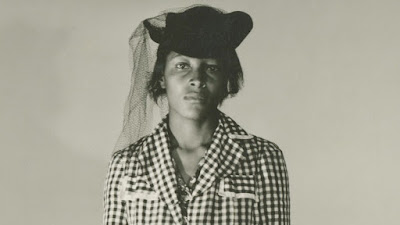As a documentary, The
Rape of Recy Taylor suffers from some noticeable journalistic flaws. These
shortcomings do not diminish the gravity of its subject, nor should they serve
as an excuse to overlook the account of a crime commonly committed and rarely
punished in the Jim Crow South: the assault of a black woman by a white man.
Walking home from church with a friend and her son, twenty-four year old Recy
Taylor was abducted and raped by several young white men in Abbeville, Alabama
in 1944. Justice did not move slowly for Recy; it failed to move at all.
Despite the friend’s son immediately reporting her kidnapping and Recy’s own
statement detailing the crime once she was recovered, no arrests were made and
no charges were ever filed in the case because the boys claimed what happened
was consensual. They also slandered Mrs. Taylor’s reputation, falsely claiming
she worked as a prostitute.
 |
| An undated photograph of Recy Taylor |
This refusal to act sparked national outrage in the black
community. Newspapers in Chicago covered the saga; civil rights activists
staged a rally at a popular Harlem hotel. A young Rosa Parks, already active in
the NAACP but not yet famous for her civil disobedience on a Montgomery bus,
traveled to Abbeville to lend her assistance. Under her leadership a Committee
for Equal Justice was formed in support of a fair and unbiased investigation.
Despite the support from as far away as the Midwest and New England, two
(exclusively white and male) grand juries refused to indict any of the accused.
It was an all-too-common failure of justice that reinforced the deeply entrenched
racist attitudes held throughout the American South.
The Rape of Recy
Taylor brings one woman’s story out from the shadows of our recent history
and places it in the growing spotlight being shone on sexual predators. For
that alone it deserves commendation and should be viewed by as wide an audience
as possible. But it is not without flaws that require acknowledgement, too. The
footage onscreen is dominated by clips of race films—movies produced for a
black audience, with a cast that was predominantly or exclusively black—and
drifting shots of an indeterminate countryside. The contemporary clips are used
so frequently that they begin to feel like pseudo-reenactments, although they
are never captioned as such; the rural scenes are never given context to lend
them meaning, or else a great deal of time is spent lingering on roads and
pastures which have nothing to do with Recy or her town. Soul and gospel music
often plays a little too loudly over any narration, implying that the audience
cannot find the material sufficiently moving without external prompting. These
choices all contribute to a lackadaisical tone which, considering the
significance and timeliness of Recy’s story, is an unfortunate one to adopt.
The appearance of a self-styled local historian also
baffles. He wrongly claims that some sexual relations between slaves and their
owners were consensual but the comment, and others that carry a suggestion of
racism, are allowed to pass without comment. Other, more educated commenters on
Recy Taylor’s case note that the organizational activity around it provided an
early spark to the Civil Rights Movement. This hints at a rich and deep history
that the film barely touches upon. Director Nancy Buirski missed an opportunity
to seize at the larger narrative unfolding in the years leading up to the Civil
Rights Movement, but her efforts at shining a light on the terrible joining of
misogyny and racism that continues to this day deserve our gratitude and, most
importantly, our attention.
RATING: ★★


No comments:
Post a Comment